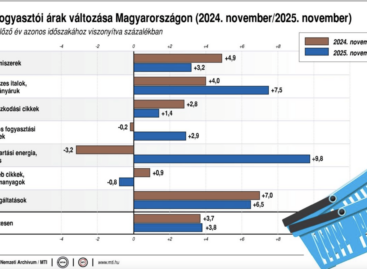FMCG retail sales at our ‘neighbours’

Czech Republic
Retail sales expanded faster than the European average: in Q1 2017 like-for-like FMCG value sales increased by 2.3 percent on average. In Q4 2016 volume sales rose 3.1 percent but in Q1 2017 they dropped 0.9 percent. On average prices increased by 3.2 percent in the market of groceries, household chemicals and cosmetics.
Austria
In Q1 2017 like-for-like FMCG value sales augmented by 2.8 percent; volume sales grew by 1.7 percent. Prices increased by 1.1 percent. Consumer demand got bigger for organic and premium products. Zielpunkt went bankrupt at the end of 2015 and half of the retailer’s shops were taken over and reopened in the autumn of 2016 by other market players – this move also contributed to the nominal sales growth in Q1 2017.
Slovakia
In Q1 2017 FMCG sales expanded by 3.9 percent, while volume sales grew way above the European average at 2.5 percent. Prices elevated by 1.4 percent. Just for comparison, in Europe volume sales decreased by 0.7 percent and prices became 0.9 percent higher.

Gergely Kovács
head of customer relations
Nielsen
Related news
KSH: in November, consumer prices exceeded the values of the same month of the previous year by an average of 3.8 percent
🎧 Hallgasd a cikket: Lejátszás Szünet Folytatás Leállítás Nyelv: Auto…
Read more >Amazon reduces seller fees in Europe
🎧 Hallgasd a cikket: Lejátszás Szünet Folytatás Leállítás Nyelv: Auto…
Read more >Retail sales in a trap of uncertainty
🎧 Hallgasd a cikket: Lejátszás Szünet Folytatás Leállítás Nyelv: Auto…
Read more >Related news
Even though the price of cocoa has halved, chocolate will not become cheaper
🎧 Hallgasd a cikket: Lejátszás Szünet Folytatás Leállítás Nyelv: Auto…
Read more >Temu is crushing domestic webshops – Christmas won’t change either
🎧 Hallgasd a cikket: Lejátszás Szünet Folytatás Leállítás Nyelv: Auto…
Read more >The Hungarian Food Bank is putting together 44,000 food packages from the proceeds of ALDI’s first Advent market
🎧 Hallgasd a cikket: Lejátszás Szünet Folytatás Leállítás Nyelv: Auto…
Read more >






